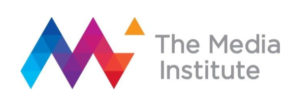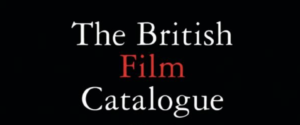Greetings, and thank you for wanting to learn more about the Universities, Archives, & Museums (UAM) program of EIDR. Founded in 2010, we’ve been fortunate to work with some of the world’s leading universities, film archives, libraries and museums (such as the Library of Congress, British Film Institute, and The Media Institute at University College London) to help them uniquely identify works in their own collections, and share those unique IDs with others across the world. Here’s what they (our participant organizations) have to say about EIDR’s work with UAM’s:
Testimonials
|
|

|
“The Entertainment ID Registry (EIDR) provides a valuable mechanism for issuing, recording and resolving unique IDs for moving image content. The Media Institute (TMI) welcomes the opportunity to work with EIDR to support a variety of initiatives and industry sectors for whom the ability to use EIDR would be valuable.”
Pam Fisher – Executive Director – The Media Institute, University College London
|
|
 |
“Archives do not exist in isolation; they are part of a wider ecosystem with each institution catering to a particular audience. The value of an audiovisual archive, however you choose to measure it, is always less than its value when part of a larger, interconnected network of archives…. if the people who need to find you cannot find you, then you may as well not exist.”
Andrea Leigh – Moving Image Processing Lead at Library of Congress & AMIA Board of Directors – as quoted in our whitepaper “Content Identification for Audiovisual Archives“
|
|
|
“The degree of certainty EIDR registration provides about the uniqueness of our work records is a major benefit…the tools, resources and expertise provided by EIDR have catalyzed it and facilitated it.”
Stephen McConnachie – Head of Data and Digital Preservation at British Film Institute
An open letter from EIDR’s Executive Director
Since the 1960s, the book world has had the ISBN (International Standard Book Number) standard, and since the 1970s, the retail world has GS1’s Global Trade Item Number (GTIN) family of UPC/EAN codes – commonly found in barcodes on consumer-packaged goods (CPG). Both are machine-readable formats that individuals and organizations can use to share key information (metadata) about the nature of the physical or digital object.
“[EIDR’s] amazing commonwealth of linked, open data has already changed and improved the way archivists, academics, and business curators interact with both external partners and internal teams.”
As universal unique identifiers, it’s nearly impossible to imagine a world today where these ID namespaces (and their real-world implementations) would not exist – so useful and valuable are they to the worlds of research, scholarship, global supply-chain management and commerce. Transactions between academic and business partners would not operate with anywhere near the scale and efficiency they currently enjoy.
EIDR’s goal is to become as ubiquitous to the film and television world as these ID standards are today in their respective areas. The registry has just crossed two (2) million unique IDs, and contains nearly four (4) million Alternate IDs (contributed by dozens of members of the EIDR participant community). This amazing commonwealth of linked, open data has already changed and improved the way archivists, academics, and business curators interact with both external partners and internal teams.
We Invite You to Join the EIDR Participant Community for Free!
Please consider this note my not-so-formal invitation to you and your esteemed organization to join us in the international EIDR Participant Community to build EIDR into a lasting resource for decades to come. This invitation comes at no cost (we provide free training as well); all we ask is that you agree to share a use-case or technical paper on how you plan to (or already) implement EIDR IDs in your organization. We are happy to start our conversation with you on the details of your journey, and by completing the sign-up form here at www.eidr.org/uam we can have our team reach out to you to set up date and time for a phone call or webinar.
“This invitation comes at no cost (we provide free training as well); all we ask is that you agree to share a use-case or technical paper on how you plan to (or already) implement EIDR IDs in your organization.”
How is EIDR a Global Standard?
Established in 2010 – EIDR is recognized around the world by the world’s leading standards bodies:
- EIDR IDs are DOIs (Digital Object Identifiers)
- DOIs are ISO 26324 and NISO Z39.84-2005 standards
- SMPTE-recognized identifiers RP 2079
- IANA/IETF standard URN format RFC 7972
 |
 |
 |
 |
 |
 |
 An open letter from Raymond Drewry, Principal Scientist at Movie Labs and chief architect/co-founder of the Entertainment Identifier Registry (EIDR).
An open letter from Raymond Drewry, Principal Scientist at Movie Labs and chief architect/co-founder of the Entertainment Identifier Registry (EIDR).
Welcome to EIDR!
Ten years ago, I had some problems to solve that would have been much easier if there had been a global ID for audiovisual works that met several criteria:
- Coverage of a wide range of works from global sources (excluding user-generated content for now)
- Appropriate granularity of identification (covering the abstract concept of an underlying work and all its many variations)
- Reliable, free access to the identifiers and their metadata (i.e. the identifiers are resolvable, and anyone can use them)
- Connection to other data sources (information from multiple sources is more powerful than information from any single source)
- A knowledgeable, engaged user community to help populate the database (crowd-sourced with a curated crowd)
- Ease of integration with and use by other pieces of software (databases aren’t very useful if no one uses them)
All of these are requirements apply for a wide variety of commercial processes and applications. (For example, reliable, resolvable identifiers are an essential part of automating the path a film takes from a producer to a distributor to an online service.) They are also requirements for connecting activities in the cultural, historical, and scholarly world. (STM [scientific, technical, medical] publishing and research have fully embraced unique, persistent identifiers for both publications and data.)
“EIDR’s remit explicitly includes works of cultural and historical importance, whether they are currently (or ever have been) commercially available or not.”
We have been very fortunate to work with film archives, universities, libraries, and museums to help them identify works in their own collections and share those identifiers with others.
Because EIDR treats other reliable identifiers as first-class metadata, we encourage all our members to add their own identifiers to existing EIDR records as “Alt-IDs.” There are two obvious applications of this:
- From an EIDR identifier, you can find references to the work in other systems and find information that is unique to that institution. For example, we have many works that have identifiers from the BFI, AFI, and SFI, all of whom have different information – local and national reviews, references to scholarly work, notes of the format of their actual holding of the work, lists of ephemera they hold, and so on.
- Many of the external identifiers in the system point to interesting metadata sources. (EIDR has minimal metadata – just enough for unambiguous identification.) As an example, MovieLabs has defined ontology and populated it by following the external identifiers in EIDR. This aggregated data is being used in several projects, including an analysis of several different genre systems and research into automated rights determination. Without EIDR tying them together, knowing that two sources really do refer to the same work is significantly more difficult and error-prone.
Access to information, especially from multiple sources, has always been important, and there is a long history of cooperation and sharing in the scholarly world. The British antiquary William Stukeley said in 1725 “…I had the greatest intimacy with…the whole sett of learned men…and by having recourse to their library’s I arriv’d to a considerable degree of knowledge.” Nowadays we can use the Internet as well.
But why do people do this? Archives, libraries, and universities have always preserved things (the traditional role of an archive), made information available (the library’s mission), and explored and researched (the scholar’s task.) EIDR makes this easier to do in the digitally connected world, but the idea is an old one. As Stukeley said in 1723, “…we are able to be the Secretaries, the interpreters and preservers of the memorials of our ancestors.” Times and tools change, but the task is the same.
In closing, I hope you’ll strongly consider both learning more about and joining EIDR as a UAM participant.
Regards,
Raymond Drewry
(Here are several examples of works of cultural and historical significance in EIDR Registry)
Participating Universities / University Consortiums
Participating Archives / Archival Organizations
 |
 |
 |
 |
Participating Museums
(More coming soon!)
List of EIDR Alt. ID types and their country of origin
The EIDR Registry contains nearly four (4) million Alternate film & television IDs (“Alt-IDs”) from both commercial and many international non-commercial archives, institutions, and organizations around the world. Here is an example of some of these Alternate IDs:
EIDR Alt. IDs |
2 Letter Country/Region Code |
EIDR Alt. IDs |
2 Letter Country/Region Code |
 |
US |  |
EU |
 |
GB |  |
GB |
 |
CA |  |
FR |
 |
DK |  |
EE |
 |
FR |  (Gifford) (Gifford) |
GB |
 |
US |  |
ES |
 |
CH |  |
JP |
 |
KR |  |
KR |
 |
KR |  |
KR |
 |
US |  |
EU |
 |
AU |  |
NO |
 |
NO |  |
PL |
 |
AU |  |
IR |
 |
SE |  |
CH |
 |
IE |  |
FR |
 |
US |  |
US |
Download our whitepapers:
Content Identification for Audiovisual Archives
Content Identification for Audiovisual Archives (Presentation)
EIDR and Cultural Works
The Future of Film Archive Search
No MAM is an Island
PIDs Go To The Movies
The Power and Promise of Identification
Using EIDR to solve a cross-archive/cross-catalogue problem
- An example (where EIDR is used to solve a particular problem), This Modern Age ( 10.5240/E051-49A0-94DB-28CC-9F5F-Z ) is a historically important series of monthly magazine-style documentaries from The Rank Organization. Information about it was scattered across multiple sources – BFI (the national archive), ITV (the rights holder) and CITWF (an on-line catalogue of world film.) All three are EIDR members and were unaware of the other’s information. Using EIDR as a cross-reference point, we were able to collate the three sources (all of which were incomplete and some of which did not think of it as a series) and end up with what seems to be a complete listing, with links to available information for each individual instalment. Having an EIDR ID for the entire Series also means it is much harder to confuse it with This Modern Age (MGM, 1931, starring Joan Crawford) which is 10.5240/DE76-BA99-3701-6237-6BCE-I
Deep link examples of works of cultural and historical significance in the EIDR Registry
One of many Hitchcock films, well represented across multiple archives:
- The 39 Steps:
- 10.5240/9CAE-7D43-D0DE-4CCA-B4BE-V
- It has a native BFI and Gifford IDs as well as AFI, AVO, ISAN, Danish, Quebecois, Swedish, and Wikidata out of 36 Alternate IDs.
- …and the Ralph Thomas version (1959)
10.5240/C740-3D18-B78C-EDA5-C221-4
Several archives have information about
- Casablanca (1942)
EIDR covers early films as well, e.g.
- Frankenstein (Edison, 1910)
- 10.5240/4375-1EB2-6CCD-DC73-B77F-V with links to AFI, BFI, and the Library of Congress
- Le voyage dans la lune [Voyage to the Moon] ( Méliès, 1902 )
- 10.5240/C79D-4B8B-36AF-B214-03C0-H It now has national ID Unifrance as well as AFI, AVO, BFI, Cinémathèque Québécoise, SFI, Wikidata non-commercial IDs out of 18 IDs.
We have tried to make sure that well-known national films include links back to their respective national archives or at least local metadata sources, e.g.
- Babettes Gæstebud (Denmark)
- Det sjunde inseglet (Sweden)
- 七人の侍 – Shichinin no samurai [The Seven Samurai] (Japan)
- Tonari no Totoro [My Neighbor Totoro] (Japan)
- 10.5240/7481-838B-59CA-63D0-B9A8-E also shows how EIDR handles language-specific versions of a work (there were two different English dubs of My Neighbor Totoro)
- La Dolce Vita (Italy)
- Den store barnedåpen (Norway)
- Un Chien Andalou (France)
- Maldone (France)
- The Lavender Hill Mob (Great Britain)
- 10.5240/C3EB-2E3F-12CF-2EC4-8D76-E which has references to the BFI’s online catalogue and to Denis Gifford’s standard reference The British Film Catalogue
- Lawrence of Arabia (US/UK, 1962)
- The Days that Confused (Estonia)
- 10.5240/E945-4B9C-6045-8A5A-102C-9 Estonian national ID plus AVO, ISAN, Wikidata out of 11 total IDs.
- Człowiek z Marmuru (Poland)
- 10.5240/4040-A390-60CF-3C91-5BF0-6 (most sources even archives do not have the correct orthography but we do) – a classic. Has the national Filmpolski (Polish Internet Film Database) as well as AVO, DFI, SFI, Wikidata out of 23 IDs.
- Myeong-ryang [The Admiral] (South Korea)
- 10.5240/ECEF-DEC8-EAB1-79E9-1E70-1 Native KMDB & KMRB IDs plus AVO, ISAN, Wikidata, Worldcat out of 22 total IDs
- Días azules (Spain)
- 10.5240/CB39-3469-7BFA-2295-C77C-Z Plus AVO, Wikidata, Worldcat out of 10 IDs.
TV Series Example:
- Battlestar Galactica (TV Mini-Series – US/UK co-production)
- 10.5240/73BA-5128-0211-6D88-79D6-J – Has national BUFVC, BFI as well as Wikidata on the non-commercial side.






